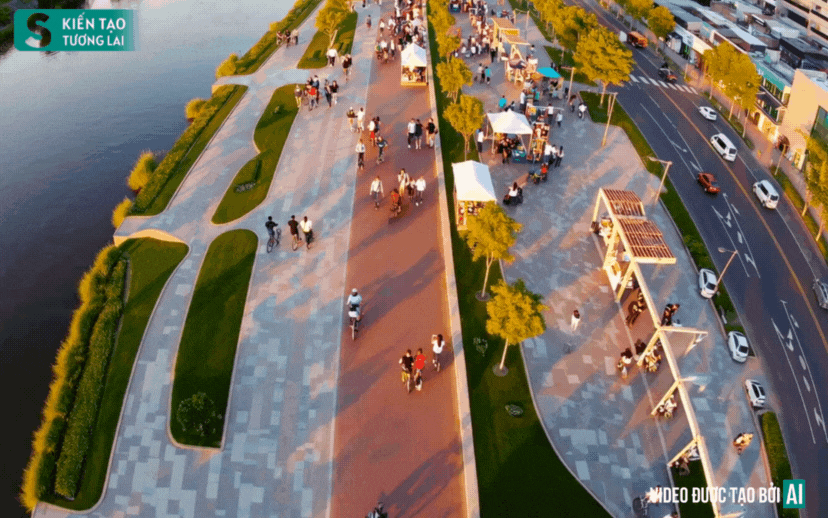Hanoi Approves Mega Project: Hong River Boulevard
On June 13, 2025, the Hanoi People’s Committee gave the green light to the proposal for the “Hong River Boulevard and Landscape” project, to be implemented through a build-transfer contract. This exciting development was put forward by a joint venture between Van Phu – Invest Development Joint Stock Company and Deo Ca Group, in response to the Government’s Resolution 68, as reported by Dau Tu newspaper.
This strategic move marks a pivotal moment in the realization of the urban planning for the Hong River area, spanning almost 40km from Hong Ha Bridge to Me So Bridge, and encompassing 13 districts, 55 wards and communes.
The area holds exceptional significance geographically, ecologically, and culturally, yet it has remained relatively untouched for years due to inadequate infrastructure, fragmented riverfront development, and lack of connectivity. It is time to unlock the potential of this sleeping giant.

Illustration of the future Hong River Boulevard. Source: AI
Based on thorough onsite surveys and analysis of transportation systems, topography, hydrology, and ecological characteristics, the Van Phu – Deo Ca joint venture proposed the creation of a “strategic backbone” along the Hong River. This will not only serve as a vital transportation link connecting Hanoi with neighboring provinces like Hung Yen and Phu Tho but also as a large-scale ecological and cultural corridor, reshaping the entire riverfront landscape of the capital.
The boulevard is designed with a multi-layered approach, incorporating terraced parks, pedestrian walkways, riverfront squares, and modern service and tourism complexes, as well as public spaces. The project aims to develop the largest riverfront public space in Hanoi, providing residents with safe, inspiring, and intimate access to the river.
A New Icon for a Riverfront Urban Civilization
More than just a thoroughfare, the Hong River Boulevard is envisioned as an urban “experience axis,” where residents can stroll along the river, cycle, participate in festivals, or simply relax in the midst of nature within the city.
The transportation system will integrate various modes, including motor vehicle roads, electric trains, inland waterway ports, and underground parking lots. The project also targets the application of energy-saving technologies, green infrastructure, and designs that adapt to climate change.
Drawing inspiration from the cultural heritage of Thang Long – Hong River, the project not only addresses urban infrastructure challenges but also creates new landscape icons, enhancing Hanoi’s cultural identity in the era of sustainable modernization and urbanization.

Illustration of residents enjoying the Hong River Boulevard in the future. Source: AI
With the involvement of experienced and strategically-minded investors, the project promises to not only bring a forgotten riverfront area back to life but also make a significant contribution to the future urban landscape of the capital.
Notably, prior to finalizing the proposal, the joint venture organized a study tour to Chongqing, China, renowned for its multi-layered riverfront development along the Yangtze River. Valuable insights gained from this trip regarding the integration of transportation, parks, waterways, community culture, and adaptability to specific geographical and climatic conditions will be carefully adapted to suit the practical context of Hanoi.
















